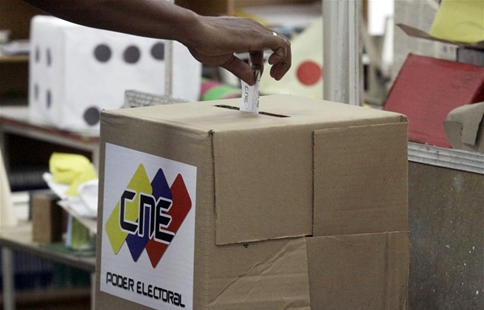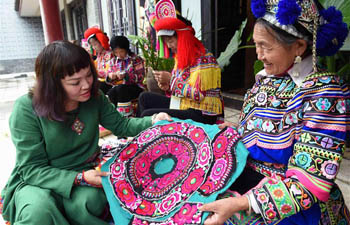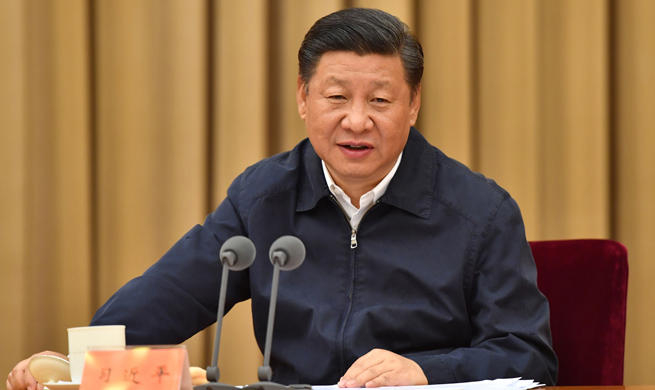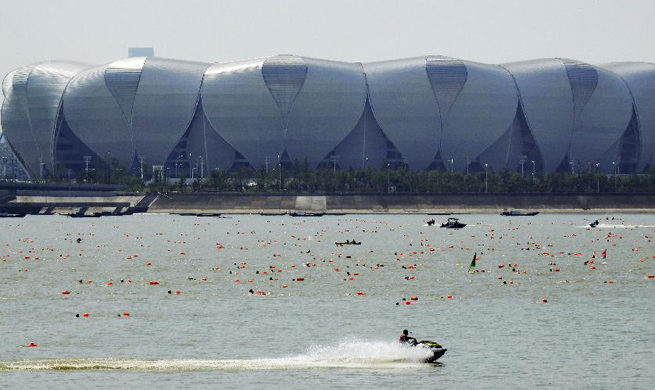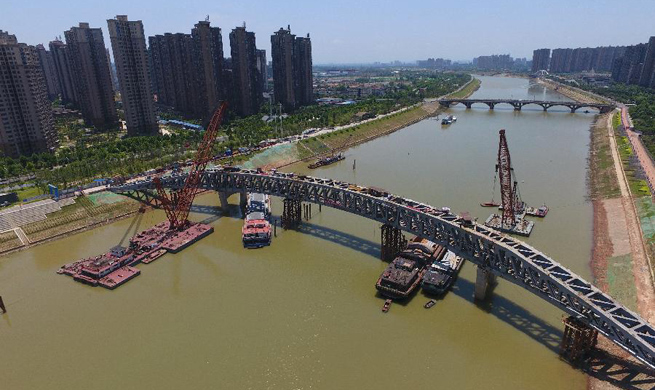by Le Yanna, Bui Long
HANOI, July 17 (Xinhua) -- "My motorbike is my bread and butter, my sole means of transport, my close friend. How can they have the heart to take it away?" residents of Vietnam lamented in recent talks with Xinhua.
Vietnam is one of the largest motorbike markets in the world, but the city of Hanoi has decided to ban the vehicle from running in its urban districts from 2030.
Most adults in Hanoi own at least one motorbike because it is an affordable means of transport that can easily navigate narrow streets and alleyways, which are typical characteristics of the city.
The city is home to 4.9 million motorbikes, 500,000 cars, and 8 million people whose average annual income will be around 3,800 U.S. dollars this year.
"My wife is a phone operator at a taxi company, and I am a Grab Bike (ride-hailing motorbike taxi service) driver," Nguyen Anh Phuong, told Xinhua.
"The motorbike ban will not increase my wife's income because the city will develop its public transport system, not taxis, while putting an end to my career as a transporter," the father of two from Hanoi's Thanh Xuan district said despondently.
The 33-year-old man, who graduated from the Hanoi Tourism College more than a decade ago, but since then has worked in the blue collar sector, has recently spent 123 U.S. dollars buying a smartphone and the same amount of money on refurbishing his Japanese second-hand motorbike to work as a Grab Bike driver.
"As a Grab Bike driver, I can sit in my house looking after my little kids while waiting for calls from customers. On average, I earn 8 million Vietnamese dong (about 354 U.S. dollars) a month, doubling my wife's salary," Phuong said.
To cope with the ban, Phuong and many of his colleagues plan to tighten their belts for the next 13 years, hoping to save enough money to buy old cars to work as a ride-hailing taxi drivers.
"For people like me, owning a small car, even a second-hand one, is not a walk in the park. With my modest income plus increasingly high costs of living in the capital city, I won't be able to afford one by 2030," he bemoaned.
Like Phuong, many people involved in vehicle trading, renting and repairing, goods delivery, pavement restaurants, or street-front houses have expressed their deep concerns about the motorbike ban.
Hoang Trung Kien, Director of Hoang Kien Motorbike Supermarket in Hanoi's Cau Giay district, which was established in 1996, told Xinhua that his supermarket is performing very well, with many high-value transactions of motorbikes made nationwide every day, but he will have to move the lucrative business outside Hanoi.
According to Kien, big cities like Da Nang in the central region of the country and Ho Chi Minh City in the southern region will surely follow suit, forbidding motorbikes in their locality, so trading motorbikes in provinces will be difficult due to residents' diminishing demand and limited budget.
"If I don't relocate my motorbike business to other provinces, I will have to try my best to engage in automobile trading. But before and after the ban takes effect, many automobile businesses will be opened, creating stiff competition," the director said.
The owners of many street-front houses and pavement restaurants are also worried that their sales will plummet due to the motorbike ban.
According to realty experts, when the ban comes into force, most street-front houses won't be able to act as shops any more, because few customers are willing to take a taxi or walk a long way to the shops to buy goods. As a result, sales or rental prices of such houses, which are far away from bus stops, metro stations or parking lots, will fall.
"Our extended family, 11 people altogether, have lived on my 'pho' (rice noodle soup with beef or chicken) shop for decades. Most of my customers ride motorbikes here to have breakfast, lunch or dinner. They will not spend their time or money arriving here by taxi or on foot," said 65-year-old Nguyen Thi Thao, owner of a well-known 'pho' pavement restaurant near Hanoi's Van Mieu-Quoc Tu Giam, Vietnam's oldest university.
However, many local officials and experts have stated that the motorbike ban will do more good than harm and that people's daily life and businesses will not be heavily affected. Similar bans have already been applied in many countries in the world, including in many cities in China, helping reduce traffic congestions and accidents, and environmental pollution.
"We all suffer during the suffocating rush hour congestion and the air is heavily polluted by smoke and dust. As Hanoi's inner city has limited space, there are no better solutions than cutting the number of personal means of transport," Nguyen Si Dung, former Vice Chairman of the Vietnamese National Assembly's Office, told local media recently.
Nguyen Huu Cuong, Chairman of the Hanoi Real Estates Club, told Xinhua that the capital city will take specific measures to enforce the motorbike ban while ensuring the livelihoods of its residents, by developing bus rapid transit (BRT) systems, urban rail and metro routes, and facilities for bicycle renting and cycling, and rearranging street-front houses.
Vu Van Vien, Director of Hanoi's Transport Department, told reporters that the city has mapped out specific roadmaps and measures to minimize the ban's negative impacts.
Hanoi will build more parking lots at the entrances and exits of its urban districts, so that people can either leave their motorbikes there to use public transport to get to downtown areas, or take their vehicles to ride to the outskirts or neighboring localities, Vien said.
Up to 80 percent of people's demand for traveling will be met by public transport, and the remaining 20 percent, which involves moving through alleyways or narrow lanes will be met by walking or cycling, the department's director said.
"By 2025, Hanoi will basically complete its new transportation infrastructure, which will comprise belt roads, radial lines and eight urban rail routes. At that time, public transport will meet 30-40 percent of people's demand for traveling," Vien said.
While municipal authorities are trying to set residents' mind at ease by introducing specific plans on developing public transport, especially BRT, elevated railway and metro systems, and on improving the quality of stations, roads and bridges, many are still worried and dispirited.
"Most bus stations are very far way from residential areas, and many important transportation projects are moving at a snail's pace. Riding an 'iron horse' (motorbike) along narrow and short streets or lanes is the fastest way to get from A to B, but they are going to put my 'iron horse' to sleep," motorbike taxi driver Phuong sighed in despair.





